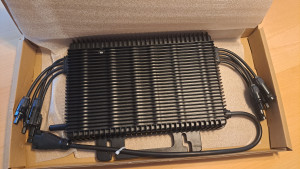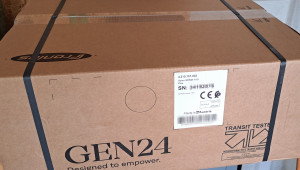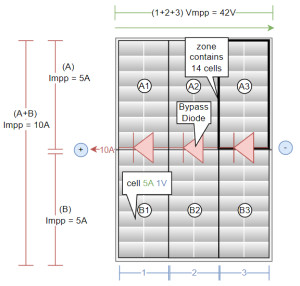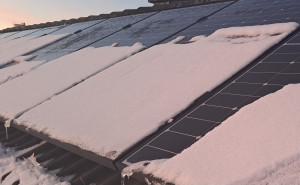PV

balcony power plant

Deye PV balcony power plant commissioning and HA integration
The hype about PV systems has also left its mark on me, so - in order to gain some experience - I have put together an 800 watt balcony power plant: Cost in total about 600$. Balcony power plants are often offered as a set, which usually consists of an inverter and two PV modules including cables. The power of the inverter limits the maximum generation power of the plant. In Austria, balcony power plants with a generation capacity of up to a maximum of 800 watts are currently allowed, Germany s... ... continue reading

Hoymiles HMS, best balcony power plant inverter?
I originally used a Deye Sun 800 inverter for my balcony power plant and replaced it with a Hoymiles HMS-2000-4T. The HMS-2000-4T supports up to 4 PV panels and can limit the output to 600 or 800 watts, making it suitable for use as a balcony power plant, among other things. As described in the article "Deye PV balcony power plant: commissioning and HA integration", I have increased the output of my balcony power plant by using 4 panels instead of 2 PV panels, which is not ideal, especially in w... ... continue reading
PV roof overview / planning / commissioning

PV - Considerations - Planning - Implementation
Compared to 2023, the module prices are now much cheaper and the waiting time for implementation much shorter. This was actually foreseeable, but I - like many others - lost my nerve in 2023 and installed the PV system on the roof myself. In hindsight, I was able to compensate for the higher material price with my own work and the more expensive - but more lucrative - subsidy. And: I can still feed the entire output into the grid before the nearby transformer station is extended, even if the rem... ... continue reading

Fronius Gen24 Commissioning: Connection >Setup >Integration
One of the first details needed for the approval of a PV system is the data of the inverter. In the years 2022/ 2023, in besides the technical data, the availability was also a decision criterion for the selection. In order to fix the inverter type and to be able to plan the rest of the plant better, I first tried to get my favorite inverter - the Fronius Gen24 - in advance. Although somewhat overpriced, but in stock, I was able to order the device via Amazon and a provider: ... continue reading
technical details

MPP Bypass Diode Power Optimizer vs Dynamic Peak
Each PV module has a so-called Maximum Power Point (MPP), the operating point at which the voltage used achieves maximum output. The data of the modules can be found in their data sheet. ... continue reading

PV modules in winter: Calculating voltage vs. current
One thing I became aware of by commissioning my balcony power plant is the importance of the voltage and current ratings of the panels: the PV panels used in my balcony power plant deliver a very low voltage 24.8 (Vmp) and in return a high current of up to 16.51A (Imp). When comparing the performance data with some inverters, I found that current inverters for the most part cannot handle more than 13A and would limit the maximum peak power. The Fronius Gen24 as an example can handle 25A on one M... ... continue reading

Energy dashboard: example Fronius Gen24 & BYD storage
The Home Assistant Energy Dashboard shows all relevant energy data in a complete overview. Performance data from a wide range of manufacturers or components can be used as the basis for the dashboard. Only sensors with the corresponding performance data are required to supply the interface with data. ... continue reading

Home Assistant snow detection PV system
In a PV system, the voltage increases with the number of PV modules, even in poor lighting conditions. This is different if certain modules are partially or completely covered in snow. I have taken advantage of this fact and created a snow detection function in Home Assistant. Why? To correct the PV forecast for the next day and adjust the heating control accordingly. ... continue reading

Hot water preparation: electricity vs. heat pump
Solutions for hot water preparation are often offered in combination with PV systems. The hot water is usually heated using a heating rod, i.e. purely electrically. The use of a heat pump would be much more efficient. To illustrate the difference, I have put together a small online calculator: ... continue reading

Fronius and BYD battery control via Modbus
For direct API access to the Fronius inverter, Modbus can be used as an alternative to the Rest API interface (Solar API). Modbus TCP enables the data to be read out via the network and certain settings to be changed. For example, charging or discharging can be forced, or a charging or discharging limit can be set. Why? To get even more out of the system. ... continue reading